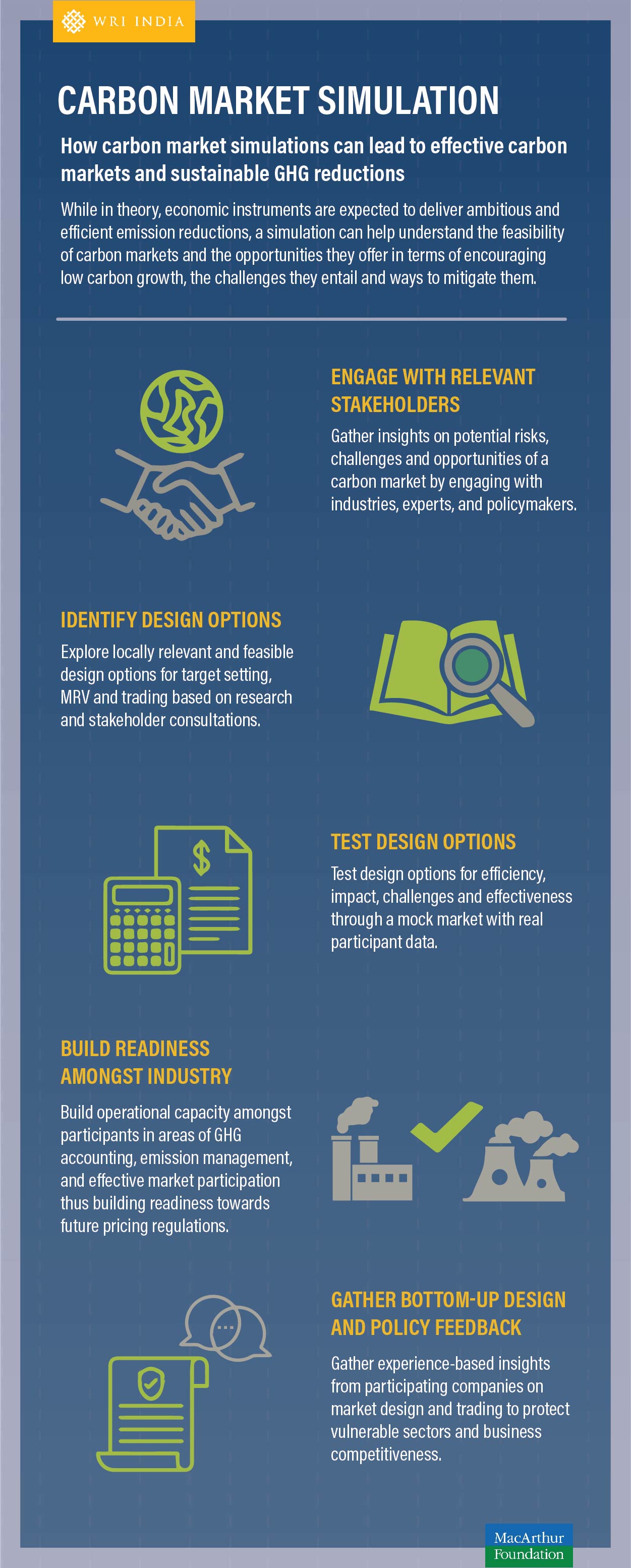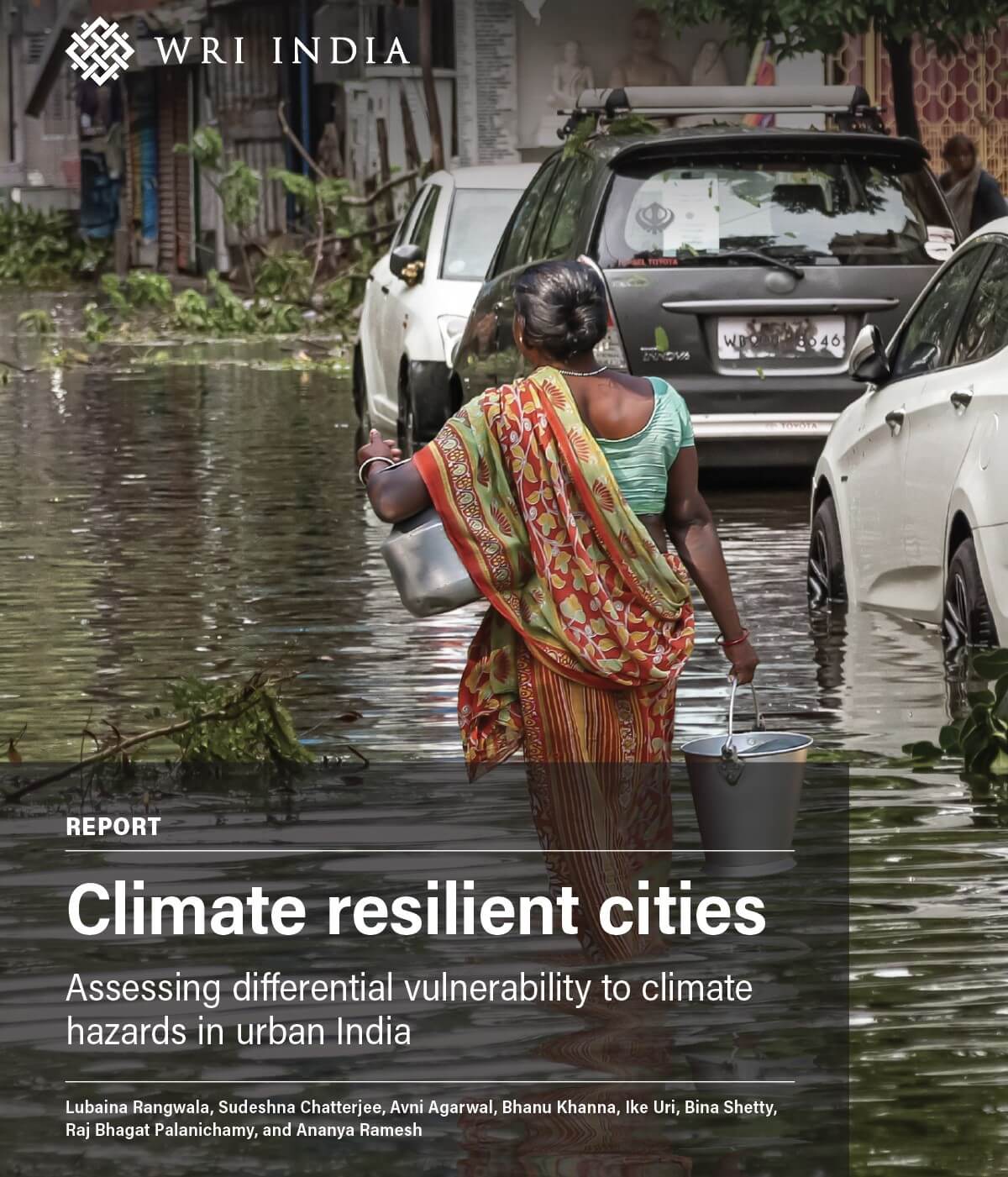From Theory to Practice: How a carbon market simulation can help design a successful carbon market in India
by and -
Well-designed carbon markets have the potential to harness least-cost emission reductions. Over the last two decades, the Indian industry has built its experience with multiple market-based mechanisms such as the “Clean Development Mechanism” (CDM), “Perform, Achieve and Trade” (PAT) and “Renewable Energy Certificate” (REC) that have led to emission reductions. However, the effectiveness of these market-based mechanisms has been limited due to the uncertainty of global prices in the case of CDM, oversupply of allowances in the case of PAT and high compliance costs in the case of REC.
Carbon markets are complex to implement and high transaction costs can make them expensive or ineffective. Without robust and standardized data monitoring, reporting and verification (MRV) frameworks, they run the risk of double counting and fraud. Bad design can also lead to inequity, inefficiency, loss of competitiveness, carbon leakage and a lack of compliance.
At the same time, good market design can mitigate such issues and ensure cost-effective, ambitious, and sustainable emission reductions.
Learning by doing
Experience from countries around the globe suggests that “learning by doing” can help design better markets by mitigating some of these inefficiencies and building capacity among stakeholders.
This can be done through a “pilot”- a small-scale carbon market, or in a more preliminary stage, a “simulation” – a mock carbon market. These can help identify and test the feasibility, cost and challenges of different design and policy options.
- For example, Mexico conducted a simulation to build operational capacity in trading amongst enterprises. Now, it is commencing a three year pilot to test design, rectify issues and develop capacity before the operational phase.
- The EU Emissions Trading System - the largest and most well-established carbon market in the world- kept improving its market design and fixing issues and inefficiencies over the course of a decade.
- China’s national ETS is now operational and builds on its 8 regional pilots that tested different design options and explored best practices to inform the design, implementation and compliance considerations for the national ETS. The regional pilots will now gradually integrate within the national ETS over time.
Drawing design insights for the Indian context
If India is to potentially introduce a carbon market, here are ways in which a simulation can contribute to an effective and feasible market in India-
- Engage with relevant stakeholders: A key aspect of a simulation is gathering sector-specific insights from relevant stakeholders such as large and small industries, carbon market experts, and policymakers on their willingness to trade, preparedness and challenges.
- Identify design options: Based on research and engagement with relevant stakeholders and experts, a simulation can allow exploration of the most locally appropriate and feasible design options such as allowance or target allocation approach, trading methodology, as well as a simple and robust MRV.
- Test design options: These design options can then be tested for efficiency, impact and effectiveness through the simulation of a mock market with real data from participants. Experience and insights from these test runs can help identify ways in which inefficiencies and other operational challenges can be mitigated.
- Build readiness amongst industry: Experience from the mock market can build operational capacity and readiness among companies towards future pricing regulations. It can help improve monitoring and reporting of relevant data, quantify reduction measures and achieving targets, improve understanding of market dynamics and build capacity on making trading decisions to achieve cost efficiencies.
- Gather bottom-up design and policy feedback: Experience from industry participants can provide valuable evidence-based perspective in selecting the most effective design options and methods of operationalizing a market. Insights from the simulation can inform policymakers of industry considerations so that they would be able to protect vulnerable sectors and business competitiveness thus address challenges like carbon leakage and inequities

Content & Design: Rhea Antony, Shubhangi Gupta and Ashwini Hingne
Carbon market simulation facilitated by WRI India
In December 2020, the Government of India instituted an Apex Committee, which brings together 13 different Union ministries, to oversee India’s implementation of the Paris Agreement and propose mechanisms and policies to achieve its targets. As the assigned National Authority to regulate carbon markets, this Committee is also empowered to issue guidelines on pricing and carbon market mechanisms in India and to provide guidance for aligning private sector actions with domestic priorities.
Given this consideration of carbon markets as part of India’s future climate policies, WRI India is undertaking a carbon market simulation in collaboration with leading companies from the Indian industry to support evidence-based design and implementation of a potential carbon market in India while building capacity among key stakeholders. This research study aims to:
- Bring learnings from global and domestic carbon markets to develop a simulation.
- Explore target setting methodologies, GHG monitoring, reporting and verification options, and trading models.
- Conduct mock trading of allowances based on real company data and notional targets.
- Draw design and implementation recommendations from company experiences and trading outcomes.
The Indian industry is the engine of India’s economic growth and a well-designed and well-planned market can help ensure that this growth continues in a sustainable manner. While in theory, economic instruments are expected to deliver ambitious and efficient emission reductions, a simulation can help understand the feasibility of carbon markets in the Indian context. It can help in understanding the opportunities they offer in terms of encouraging low carbon growth as well as the challenges they entail and ways to mitigate them.
This is the second blog in a new series on carbon markets in India. In this blog series, we will share insights from WRI India’s corporate carbon market simulation in which more than 20 leading Indian companies participated during 2020-2021.


